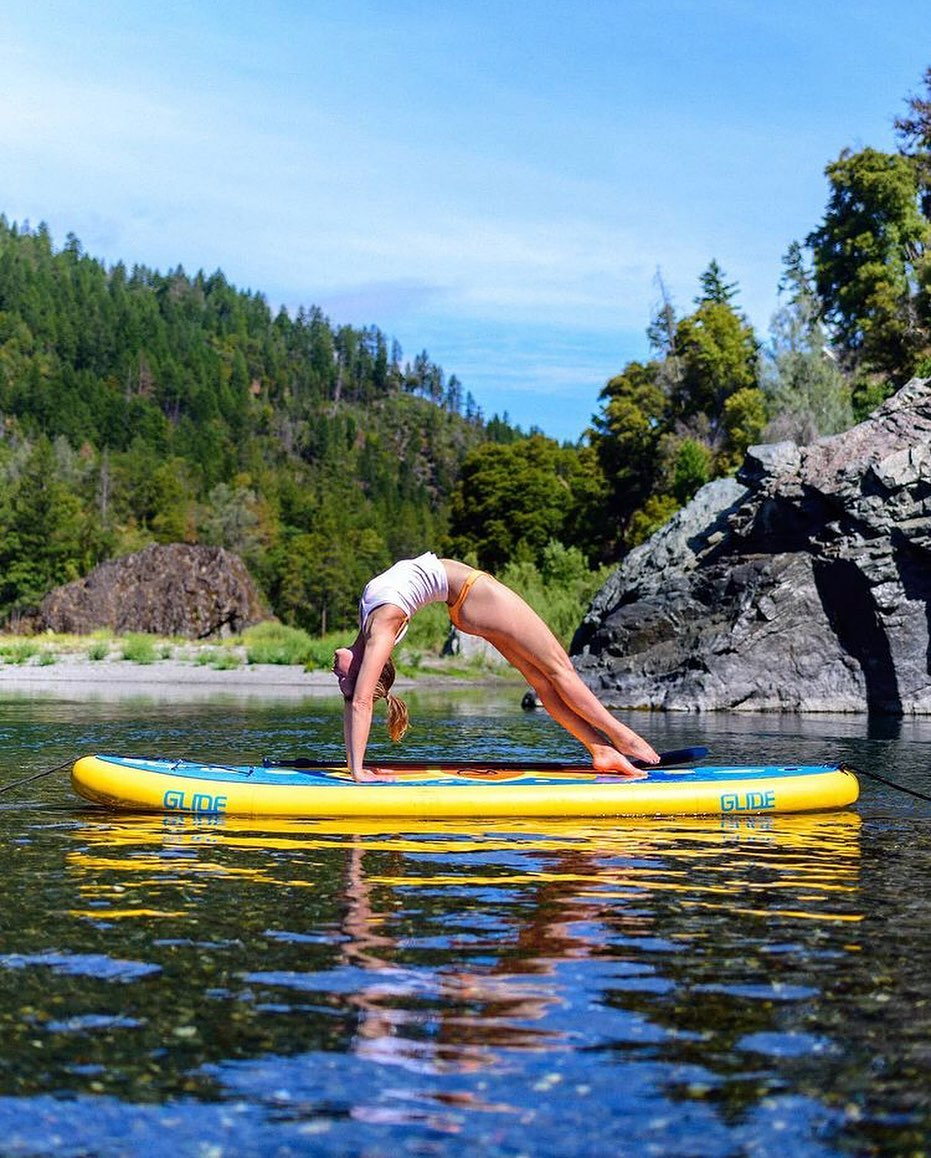
Paddle Boarding for Weight Loss: A Complete Guide to SUP Fitness
Stand up paddle boarding is a fun, low-impact workout that can help you lose weight, strengthen muscles, and improve heart health — all while exploring the water.
Yes — stand up paddle boarding (SUP) is not only fun, it’s also an effective, low-impact full-body workout that burns calories, strengthens muscles, and improves cardiovascular health. By combining consistent paddling with mindful nutrition, SUP can help you lose weight while enjoying time on the water.
Table of contents
SUP: A Fun Way to Get Fit
Stand up paddle boarding may look serene from shore, but once you step on the board, you quickly realize it’s more than just floating around. Every stroke, shift in balance, and core engagement adds up to a workout that rivals many gym sessions. The bonus? You’re outside, surrounded by nature, soaking up vitamin D, and having fun.

How Paddle Boarding Works Your Body
Core Strength
Balancing on a paddle board engages your abs, obliques, and lower back continuously. Even when you’re gliding in calm water, your midsection is working overtime to stabilize you.
Upper Body Training
Every paddle stroke uses your arms, shoulders, and back. Over time, these muscles become stronger, building endurance and definition.
Lower Body Engagement
Your legs are constantly making micro-adjustments to keep you steady. This strengthens quads, hamstrings, glutes, and calves.
Cardiovascular Health
Paddle boarding gets your heart rate up, improving circulation, lung capacity, and overall cardiovascular fitness. The more you paddle, the more you’ll notice your stamina improving both on and off the board.
Paddle Boarding and Weight Loss
At its core, paddle boarding for weight loss comes down to calories burned versus calories consumed. The great news is that SUP is a calorie torcher:
Leisurely paddling: 300–400 calories per hour
Moderate effort: 500–700 calories per hour
Intense paddling or racing: 700+ calories per hour
That means a two-hour paddle session could burn as much as a spin class or long run — without the joint stress.
How to Maximize Weight Loss With SUP
1. Be Consistent
Paddle regularly — aim for 2–3 times per week. Like any exercise, results come from routine.
2. Mix in Intervals
Alternate between steady paddling and short bursts of sprint strokes. This keeps your heart rate elevated and boosts calorie burn.
3. Refine Your Technique
Proper form helps you paddle efficiently, covering more distance and burning more calories. Engage your core and use your whole body, not just your arms.
4. Cross-Train on the Water
SUP yoga or SUP fitness workouts add variety and target different muscle groups while keeping things fun.
5. Pair With Good Nutrition
Exercise alone won’t do the trick if diet habits work against you. Stick to whole foods, stay hydrated, and avoid empty calories.
Tracking Your Progress
Seeing your numbers can keep you motivated. Apps like MyFitnessPal, Fitbit, Apple Watch, Garmin, Noom, and Lose It! help track calorie burn, paddling distance, and progress over time.

Getting Started With SUP for Fitness
-
Pick the Right Board: A stable, all-around inflatable paddle board is ideal for beginners. If weight loss is your focus, choose one that’s wide enough for stability but light enough to carry easily.
-
Start on Calm Water: Lakes, reservoirs, and sheltered bays are the perfect training grounds.
-
Consider Lessons or Groups: Taking a lesson helps you learn faster. Paddling with friends or fitness groups keeps things social and motivating.
-
Always Use Safety Gear: A leash and Coast Guard–approved PFD are non-negotiable.
Common Mistakes to Avoid
-
Skipping warm-ups: Take 5 minutes to stretch or paddle gently before going all out.
-
Poor diet choices: No workout can outpace a consistently unhealthy diet.
-
Ignoring technique: Bad form reduces calorie burn and can lead to injury.
-
Inconsistent routine: Sporadic paddling won’t deliver long-term results.
-
Overtraining: Balance hard sessions with rest to avoid burnout.
A Holistic Approach to Weight Loss
True transformation happens when fitness is paired with lifestyle choices:
-
Balanced diet with lean proteins, whole grains, fruits, and veggies
-
Hydration before, during, and after paddling
-
Mindful eating instead of restrictive dieting
-
Quality sleep and stress management to support recovery
SUP becomes the cornerstone of a healthier, more balanced life.

FAQs About SUP and Weight Loss
Is paddle boarding good for losing weight?
Yes — a moderate session can burn 500+ calories per hour, making it an effective and enjoyable way to support weight loss.
How many times a week should I paddle board for weight loss?
Aim for at least 2–3 times per week, combined with healthy eating, for consistent results.
Which type of SUP is best for fitness and weight loss?
All-around inflatable SUPs work for most people. If you want more intensity, consider a touring board for longer paddles.
Can beginners still lose weight paddle boarding?
Absolutely. Even at a slow pace, beginners burn hundreds of calories per hour while building strength and balance.
What’s better for burning calories — SUP yoga or regular paddling?
Regular paddling typically burns more calories per hour, but SUP yoga adds core engagement and variety, which can improve overall fitness.
Final Thoughts: Paddle Your Way to Fitness
Stand up paddle boarding is more than just a water sport — it’s a lifestyle that blends exercise, mindfulness, and adventure into one activity. Unlike many workouts that feel like a grind, SUP draws you outdoors, surrounds you with nature, and transforms fitness into something you look forward to. The ability to torch calories, tone muscles, and build cardiovascular endurance while exploring rivers, lakes, and coastlines makes it one of the most versatile workouts available.
For those focused on weight loss, the appeal of SUP is that it doesn’t feel like a traditional “diet and exercise” routine. Instead, every paddle session becomes an opportunity to discover new places, challenge yourself, and connect with the water. The physical benefits — from burning 400 to 700 calories per hour — are matched by the mental rewards. Stress reduction, improved focus, and a sense of calm often accompany time on the board, which plays an important role in maintaining long-term health and sticking with fitness goals.
Even better, SUP is accessible to nearly everyone. Beginners can start on calm lakes with wide, stable boards. Families can paddle together, making exercise a shared activity rather than a chore. Fitness enthusiasts can push harder with long-distance touring, interval sprints, or SUP yoga flows that challenge balance and core strength. No matter your skill level, paddle boarding adapts to your needs and grows with you.
If your goal is to shed pounds, feel stronger, and enjoy the process, paddle boarding offers the perfect mix of fun and effectiveness. Combine consistent sessions with a balanced diet, proper hydration, and recovery, and you’ll find yourself healthier, leaner, and more energized. Unlike gym routines that fade with time, SUP inspires consistency because it’s something you genuinely want to do.
In short, SUP isn’t just a way to exercise — it’s a path to sustainable fitness and lasting well-being. So grab a paddle, step onto your board, and take that first stroke. Your body will thank you, your mind will thank you, and before long, you’ll realize that weight loss was just one of the many benefits you gained from choosing paddle boarding.
👉 Ready to start your journey? Glide’s beginner-friendly inflatable SUPs are designed for stability, comfort, and real-world performance — helping you turn every paddle into progress.





